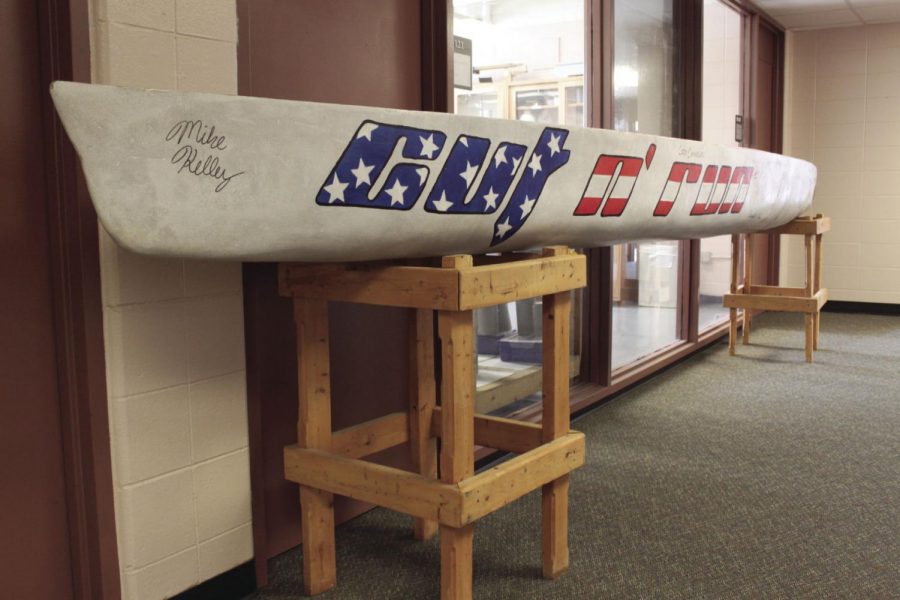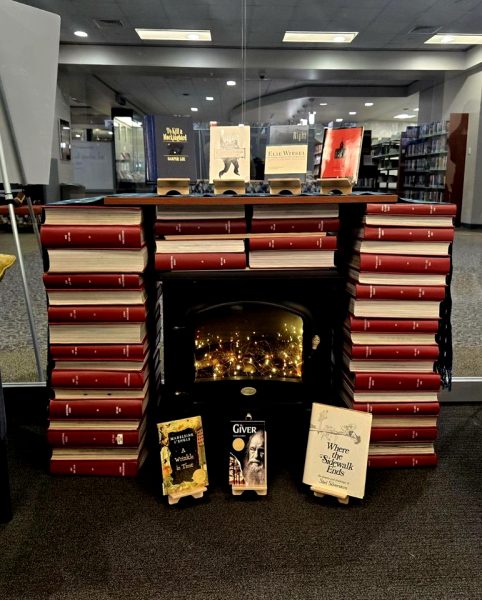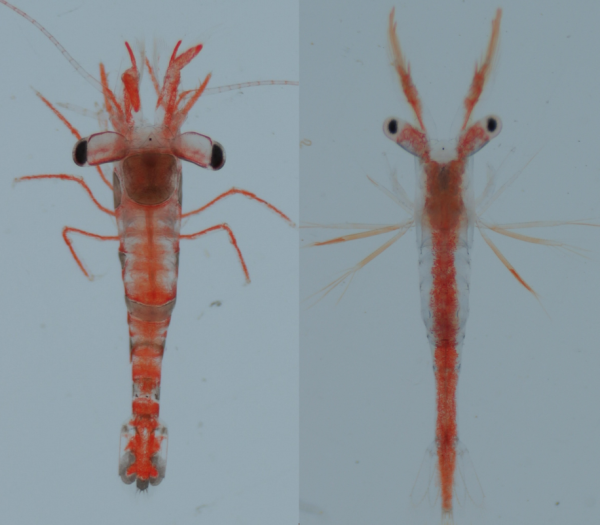RWU’s concrete canoe
Pictures courtesy of Kayla Ebner
Gabrielle Dougherty
Herald Contributor
About a mile down the road from Roger Williams University stands the Bristol Yacht Yard. The yard contains immaculate boats with perfectly painted and glossed hulls, yet in the mix lies an outlier: a concrete canoe.
The Society of Civil Engineers at RWU creates a concrete canoe each year in a competition against other universities. This year marks the third year they have participated. The canoe’s theme for 2017 is “Mt. Hope it Floats.” The canoe participates in multiple races but is also put on display for judgement and other competitors to see.
Found under the tent working on the production of the canoe is Ryan Mellen, the director of construction for the building process. Along with Mellen is Joe Sojka, the canoe captain, Nicole Capistran, the mix design lead, and Taylor Winnick, the canoe design lead. The production of the canoe is done with a total of 20 members and takes months to construct leading up to the race weekend, which took place last weekend at the University of Connecticut.
“Many people do not see engineering as a creative major, but engineering definitely requires thinking outside the box, because there is a solution to everything,” Mellen said.
The creation of the concrete mold itself takes at least five hours to solidify, then weeks for the mold to cure. Visiting the concrete canoe is a daily task for the engineers,in order to make sure that the concrete is not cracking. The team has had the canoe crack multiple times before having a mold that is ready to race.
Once the canoe is ready for the race, the Roger Williams Society of Civil Engineers will compete against other universities, including Wentworth, University of Rhode Island, Northeastern University, University of New Haven, UMass Lowell, University of Maine, UConn, Worcester Polytechnic Institute, and Laval University.
“I am excited that all the hard work to come together when the canoe is finally put in the water. The best part of the competition is taking a design on paper and seeing it turn into an actual canoe we can race,” Sojka said.
Each team is put to the test by the judges to determine what school was able to apply the most theory behind the making of their concrete canoe. There are three rounds for the races, two-person men’s and women’s, then four-person co-eds.
“The trick to a successful concrete mixture is adding materials to the mix that make it lighter, so we add glass bubbles, latex, and an additive called fly ash along with other material that will make our canoe float best,” Mellen said.
The concrete canoe comes out to be 18 feet-long and can weigh up to 400 pounds, depending on the concrete mixture. The concrete and other construction supplies that make up the canoe are donated from local businesses such as Bristol hardware stores or construction companies that donate bags of concrete. The Society of Civil Engineers looks forward to this competition each year, representing the RWU School of Engineering by putting their creativity and critical thinking to the test.
“I get some interesting looks when I say we are building a concrete canoe, and that makes me smile,” Mellen said.






